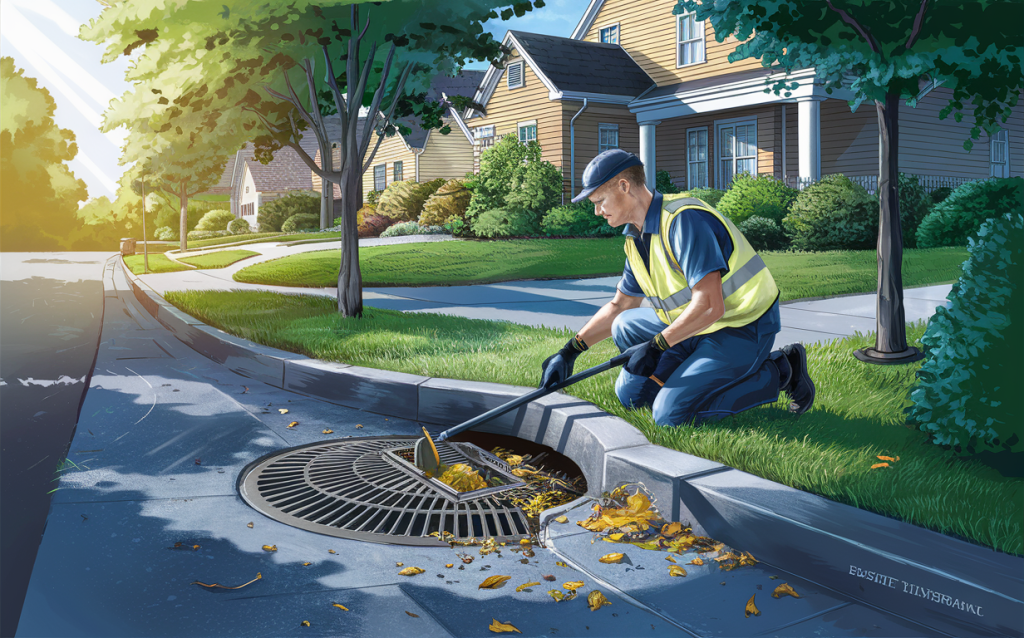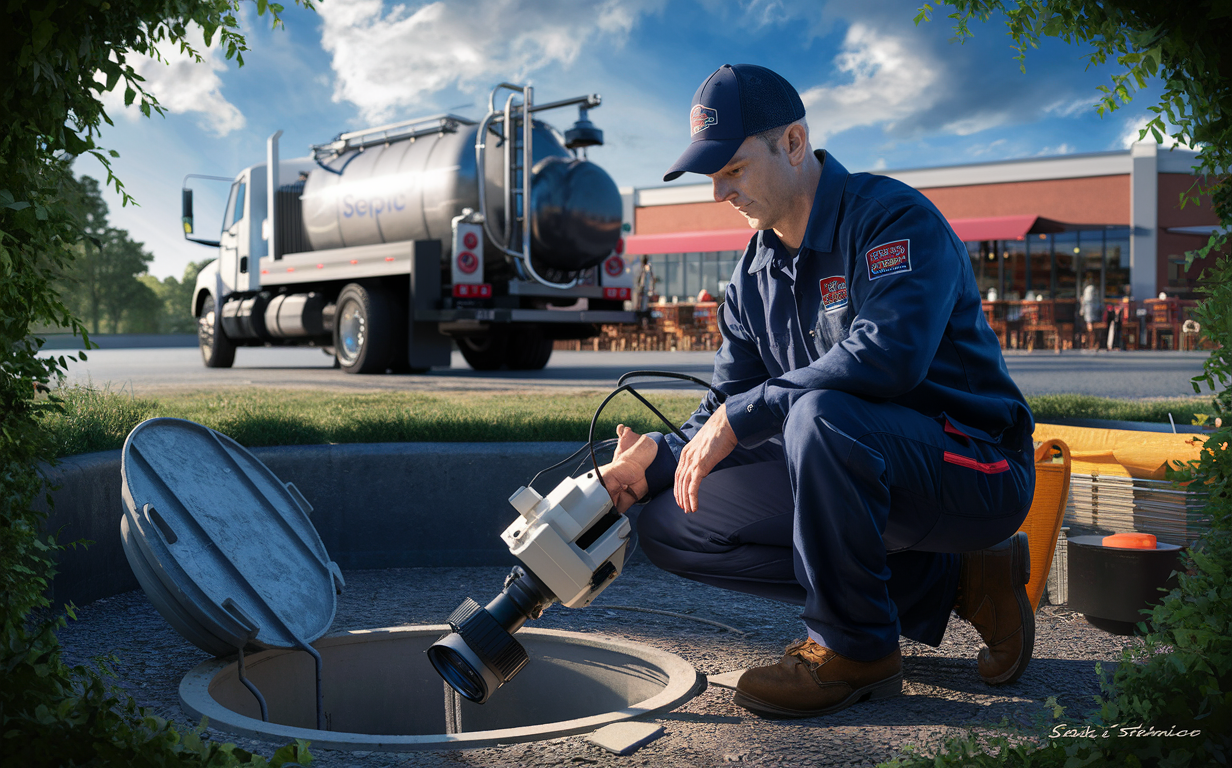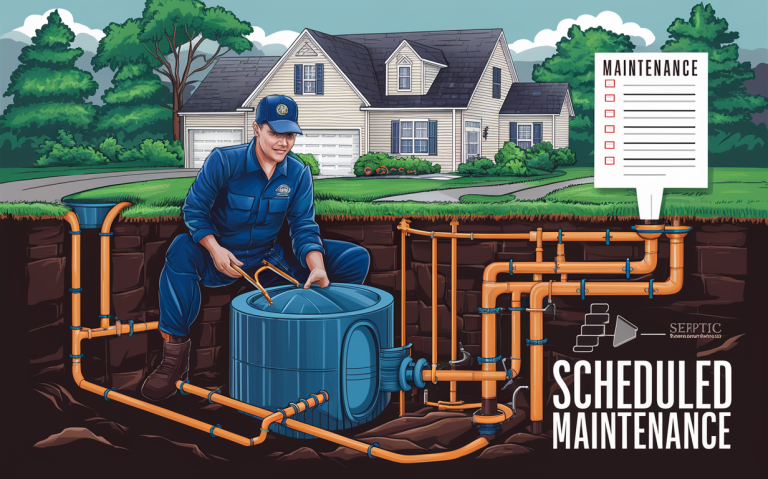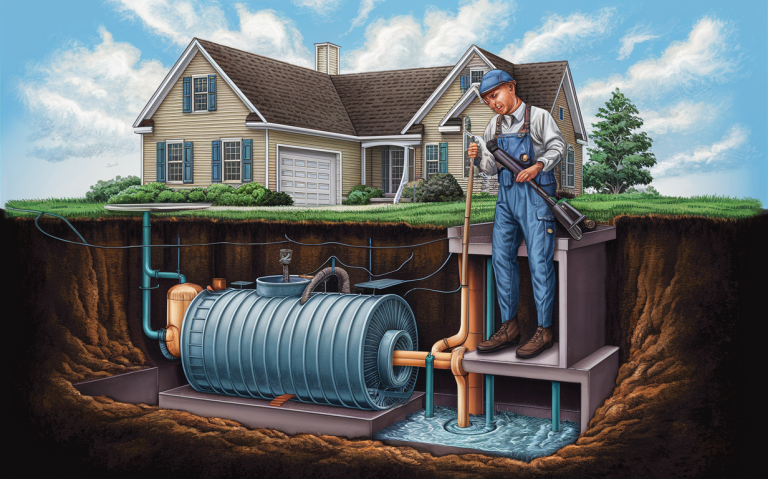Full Septic System Replacement: Homeowner’s Comprehensive Guide
Full septic system replacement guide: Learn costs, process, and maintenance tips for installing a new septic tank and drain field.
When a septic system fails, a full septic system replacement may be necessary. This task can seem daunting, but understanding the process and costs involved can help you make informed decisions. Let’s walk through the essential aspects of replacing a septic system, from identifying the need for replacement to understanding the costs and steps involved.
Table of Contents
Key Takeaways
- Full septic system replacement includes replacing both the septic tank and drain field.
- Costs depend on factors like the size of the system, soil quality, and labor.
- Regular maintenance can extend the life of a new septic system.
Signs You Need a Full Septic System Replacement

The first step in managing your septic system is knowing when it’s time for a replacement. Here are some indicators that your septic system may be failing:
- Persistent foul odors: If you notice unpleasant smells around your property, it could mean your septic system is not functioning properly.
- Slow drains: Bathtubs, sinks, and toilets that drain slowly can indicate a problem with the septic system.
- Sewage backups: Backups in your home are a serious sign that your system is failing.
- Lush patches of grass: Areas of unusually green grass can suggest that your septic system is leaking.
- Standing water: Puddles or soggy areas in your yard may indicate a failing drain field.
Understanding the full Septic System Replacement Process
A full septic system replacement involves several steps, each crucial to ensuring the new system’s efficiency and longevity.
Initial Assessment and Inspection
Before replacing a septic system, a thorough inspection is necessary. A septic professional will evaluate the current system’s condition, including the tank, pipes, and drain field, to determine the extent of the issues.
Soil Testing
Soil testing, or percolation tests, assess the soil’s ability to absorb water. This test is critical for designing a system that works effectively with your property’s soil type.
Permits and Regulations
Replacing a septic system requires permits and adherence to local regulations. Your septic contractor will handle the paperwork, ensuring compliance with all zoning and environmental laws.
System Design and Planning
The design phase involves planning the layout and specifications of the new system. Factors considered include the number of bedrooms in the home, soil type, and local regulations.
Excavation and Installation
Once the design is approved, the old system is excavated to make way for the new installation. This phase includes installing the new tank, pipes, and drain field.
Final Inspection and Testing
After installation, the system undergoes a final inspection and testing to ensure everything is working correctly. This step ensures the system meets all legal and functional requirements.
Costs Involved in Full Septic System Replacement
The cost of replacing a septic system can vary widely based on several factors. Here’s a detailed look at what you might expect to pay:
| Component | Approximate Cost |
|---|---|
| Septic Tank | $1,000 – $5,000 |
| Drain Field | $2,000 – $10,000 |
| Permits | $500 – $2,000 |
| Soil Testing | $1,000 – $2,000 |
| Labor | $3,000 – $10,000 |
| Total Estimated Cost | $7,500 – $29,000 |
Factors Affecting Costs
- System Size: Larger systems cost more due to increased materials and labor.
- Soil Quality: Poor soil may require additional treatment or a more advanced system, increasing costs.
- Accessibility: Difficult-to-reach locations can raise labor costs.
- Local Regulations: Stringent local regulations can add to the overall expense.
DIY vs. Hiring a Professional
While some homeowners may consider a DIY approach to septic system replacement, it’s often not advisable. Here are a few reasons why hiring a professional is the better route:
- Expertise: Professionals have the knowledge and experience to handle complex installations.
- Permits and Compliance: A licensed contractor will ensure all work meets local codes and regulations.
- Safety: Handling heavy equipment and hazardous materials can be dangerous without proper training.
Maintenance Tips for Your New Septic System

Once your new septic system is in place, regular maintenance is critical to extend its lifespan. Here are some maintenance tips:
- Regular Pumping: Pump the septic tank every 3-5 years to prevent buildup.
- Water Conservation: Reduce water usage to prevent overloading the system.
- Proper Waste Disposal: Avoid flushing non-biodegradable items and chemicals that can harm the system.
- Inspection: Have a professional inspect your system annually to catch potential issues early.
Common Questions About Septic System Replacement
How long does a septic system last?
A well-maintained septic system can last 20-30 years. Regular inspections and maintenance are key to longevity.
What causes septic systems to fail?
Common causes include poor maintenance, overloading the system, and soil issues. Regular pumping and mindful water usage can prevent many problems.
Can I install a septic system myself?
While it’s legal in some areas, installing a septic system yourself is highly discouraged due to the complexity and potential for costly mistakes.
Comparing Different Types of Septic Systems
Not all septic systems are created equal. Here’s a quick comparison of some common types:
| Type | Pros | Cons |
|---|---|---|
| Conventional | Simple design, lower cost | Requires large drain field |
| Aerobic | More efficient, can be used in poor soil | Higher cost, more maintenance |
| Mound | Suitable for areas with high water tables | Requires more space, higher installation cost |
| Chamber | Flexible installation, less space needed | May require more frequent maintenance |
Innovative Alternatives to Traditional Septic Systems
As technology advances, so do septic systems. Here are some innovative alternatives to consider:
Constructed Wetlands
These systems use natural processes involving wetland plants to treat wastewater. They are environmentally friendly and can be an attractive addition to your property.
Recirculating Sand Filters
These systems filter wastewater through sand, providing high-efficiency treatment. They require less space than traditional systems and are suitable for areas with poor soil conditions.
Drip Irrigation Systems
Drip irrigation systems disperse treated wastewater through small tubes buried in the soil. They are ideal for areas with shallow soil layers or high groundwater levels.
Facts About Full Septic System Replacement
- Cost: The cost of a full septic system replacement can vary greatly depending on the size of the property, the complexity of the system, and local labor and material costs. On average, homeowners can expect to pay between $10,000 and $30,000 for a complete septic system replacement.
- Signs of Need: Some signs that a septic system may need to be replaced include frequent backups, slow drains, unusual odors, and a lush, green area over the septic tank. If you notice any of these issues, it’s important to have the system inspected by a professional.
- Process: The process of replacing a septic system involves excavating the old system, installing a new drain field, and connecting the new system to the house. The exact process can vary depending on the specifics of the property and the type of system being installed.
- Maintenance: Proper maintenance is key to preventing the need for a full septic system replacement. Regularly pumping the tank, using water efficiently, and avoiding putting non-biodegradable items down the drain can help extend the life of the system.
- Regulations: Local regulations may require permits and inspections for septic system replacements. It’s important to check with your local health department or environmental agency to ensure that all necessary steps are taken.
Choosing a Replacement System
- Assess your needs: Consider your household size, soil quality, and budget when choosing a system.
- Consult professionals: Engage with experienced contractors for assessments and installations.
- Stay informed: Keep up with local regulations and innovative technologies.
List of Steps for a Successful Septic System Replacement
- Identify the need for replacement: Look for signs of system failure.
- Consult a professional: Get an expert assessment and recommendations.
- Conduct soil testing: Ensure your soil can support the new system.
- Obtain necessary permits: Comply with local regulations.
- Design the new system: Plan the layout and components.
- Hire a contractor: Choose a reputable company for the installation.
- Excavate and install: Remove the old system and install the new one.
- Inspect and test: Ensure the system works correctly.
- Maintain regularly: Follow maintenance guidelines to extend the system’s life.
Conclusion
Replacing a full septic system is a significant investment, but it’s essential for maintaining a healthy and functional property. By understanding the process, costs, and maintenance requirements, you can ensure a smooth replacement experience and a long-lasting septic system.
Engage with experienced professionals like Texway Wastewater Services to guide you through every step, from initial assessment to final inspection. With proper care and regular maintenance, your new septic system will serve you efficiently for many years.
Full septic system replacement guide: Learn costs, process, and maintenance tips for installing a new septic tank and drain field. Expert advice for homeowners. For more information or to schedule a service, contact Texway Wastewater Services today.








 Texway Wastewater Services is a septic, wastewater, and excavation company based out of Burleson, Texas and serving the surrounding areas. We specialize in
Texway Wastewater Services is a septic, wastewater, and excavation company based out of Burleson, Texas and serving the surrounding areas. We specialize in